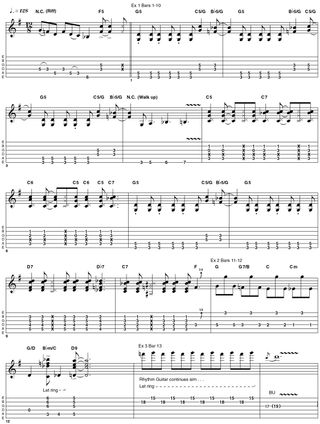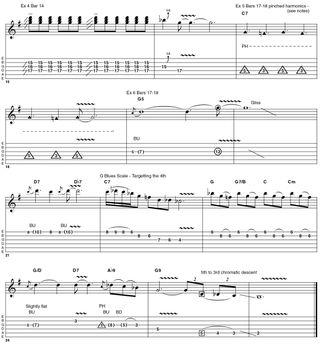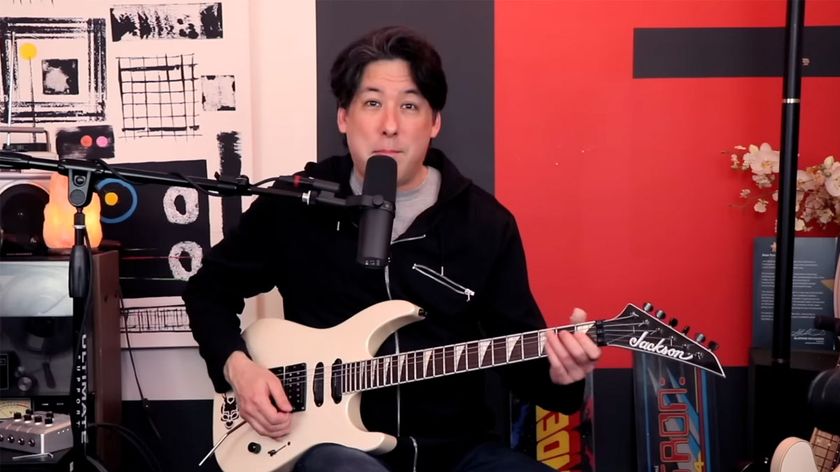6 guitar tricks you can steal from Billy Gibbons
Channel the Texan bluesman’s iconic style with this rhythm and lead workout

As we were reminded in our Billy Gibbons interview, the Reverend is one of the most authentic and instantly recognisable guitarists around.
Aside from a short tenure in the 60s with The Moving Sidewalks and a couple of solo albums, he has spent his whole career playing pretty much exclusively with his own band, ZZ Top. In their early days during the 1970s, they were the embodiment of a hell-raising, beer-drinking, butt-kicking Texan blues-rock band.

Billy F Gibbons: these are the 10 guitarists who blew my mind
Songs such as Just Got Paid, Beer Drinkers & Hell Raisers, Cheap Sunglasses, La Grange, Tush, Arrested For Driving While Blind, I’m Bad, I’m Nationwide, Blue Jean Blues and tons of others all helped ensure their well-deserved legendary status.
On to the 1980s and ZZ Top reinvented themselves into slickly produced video kings who soon became the darlings of the MTV generation and had massive hits with Legs, Got Me Under Pressure, Sharp Dressed Man, and Gimme All Your Lovin’.
From the '90s onwards they’ve continued to tour and release more great music - Pincushion, Rhythmeen, She’s Just Killing Me, Poke Chop Sandwich, My Head’s In Mississippi, and Chartreuse, to name a few more. In many ways, this later period has seen them return to their roots - what’s not to like about that?
No matter what period of their music it is, you can always recognise Billy’s low-down dirty riffing, his great ‘feel and groove’, and his often pinched-harmonic-infused blues-rock soloing. In this issue, I’ve written a short 24-bar blues demo/video track that pays homage to his style… Enjoy!
Examples 1-3
Example 1: Rhythm guitar part
Get the MusicRadar Newsletter
Want all the hottest music and gear news, reviews, deals, features and more, direct to your inbox? Sign up here.
Billy has always been a composer of catchy-yet-cool electric guitar parts. His rhythm playing is always really groovy and as such offers a reference that’s well worth learning. In this example, things kick off in bars 1 to 4 with shuffled and fairly staccato ‘5’ chords that are interspersed with diads and a short walking bass used to connect to the IV chord C7. The following section in bars 5 and 6 has the 5 (G), 6 (A), and b7 (Bb) notes added to the C chord, but not in a typical ‘blues shuffle’ way. Here, they’re all played as a melodic line on the G string.
It’s essential to mute the D string with the underside of the fretting hand finger that’s holding down the C as you play this section. Bars 7 and 8 are the same idea as already seen in bars 1 to 4, and the final section in bars 9 and 10 descends from the V chord (D7) to the IV chord (C7) via a passing Db7 chord. Pay close attention to the muted notes (marked with ‘x’s) here - they’re vital to the ‘feel’ of the part.
Example 2: The turnaround
A very typical turnaround lick - with a twist! Bar 11 is a descending bass line that is alternated with G note pedal tones. This is best played using either hybrid picking as I have, or with fingerstyle technique. The following bar contains the twist. Usually, you either play a chromatic (C, Db, D) walk up to the V (D) from the IV (C), or you play the Eb9 (#V) to D9 (V) chords as the end of the turnaround.
Sometimes you get both at the same time played as separate guitar parts - as in the ZZ Top classic Tush. Here is the version I personally use where you play both at once on a single guitar - it’s great fun. Notice how tense the Eb9/C sounds! This isn’t wrong or a problem, though, as it quickly gets resolved by the upcoming D9 chord in a classic example of musical ‘tension and release’.
Example 3: Tone intervals
This is one of Gibbons’ favourite moves. It’s simple idea, but it works wonderfully well. What is happening is that the b7 (F) and the root (G) of the G7 chord are being alternately sounded and then allowed to ring into each other. It’s the slight clash of the tone interval that occurs between the two notes that makes the idea sound so cool. This same idea also works fine on m7 chords.

Examples 4-6
Example 4: ‘Dust My Broom’ lick
This isn’t actually a Billy Gibbons lick at all. But he has used it so often it’s certainly worth including. It originally comes from the Elmore James classic tune Dust My Broom and is a total must-learn blues cliché. To perform it, simply play the G triad in triplets and slide it in from below every beat or, as here, every two beats. The overall idea is to sound like you’re using a slide, even though you aren’t.
Example 5: Pinched Harmonics
Pinched harmonics are one of the most recognisable elements of Gibbons’ style - they’re in pretty much every solo. One classic example that springs to mind is the solo he played in La Grange. I can vividly remember trying to learn that solo, note by note, when I was younger. Of course, now I’m older and hopefully a little wiser, I realise that harmonics like this are not really ‘planned’ - you just ‘dig in’ and hit the string simultaneously with the flesh of the side of your thumb and the pick at different parts of the string length and see what harmonics spring forth!
On the video you can easily see how I am moving my picking hand along the string in an attempt to vary the harmonics produced. This is why I haven’t notated the exact pitches of the harmonics that I played in the notation here - that would be pointless because they’d most likely be different every single time!
It is worth mentioning that Billy also sometimes plays pinched harmonics by plucking the string with his pick-hand index finger and then using the side of his pick-hand thumb to simultaneously lightly touch the stings at various (node) points. Try it; it works brilliantly!
Example 6: Tapped bend lick
This lick Is a Gibbons classic! I first heard it way, way back in 1973 when it was played in the solo (at 1:25) of Beer Drinkers & Hell Raisers from the Tres Hombres album. It was definitely the first time I ever heard tapping on a recording… five years prior to Van Halen’s first album as well!
To play it correctly, you simply perform a regular string bend from the C to the D on the G string and then tap and hold the G string at the 10th fret. Because the string is still being bent up by a tone, the note produced by the tap will be a G and not the F that usually resides at the 10th fret of that string. The vibrato applied to the bend is most effective when performed with your fretting hand.











